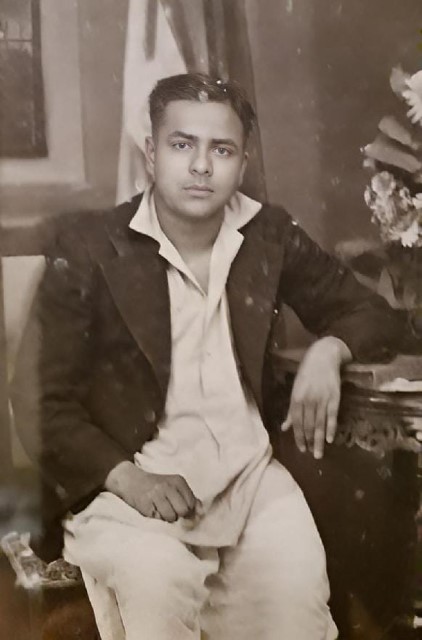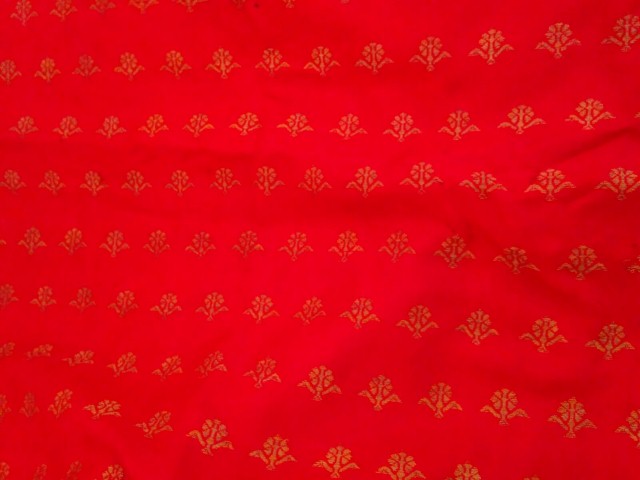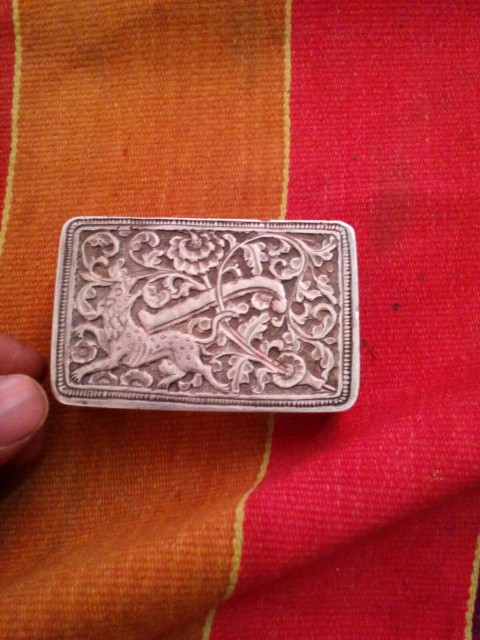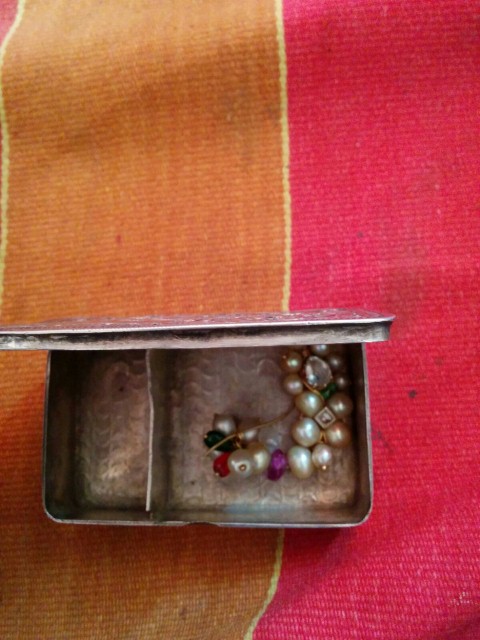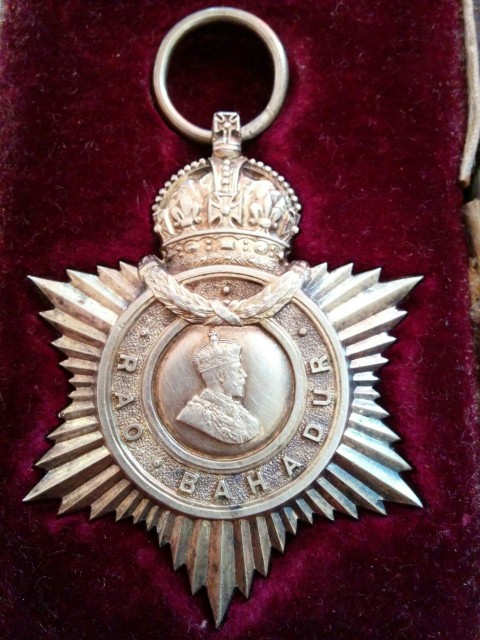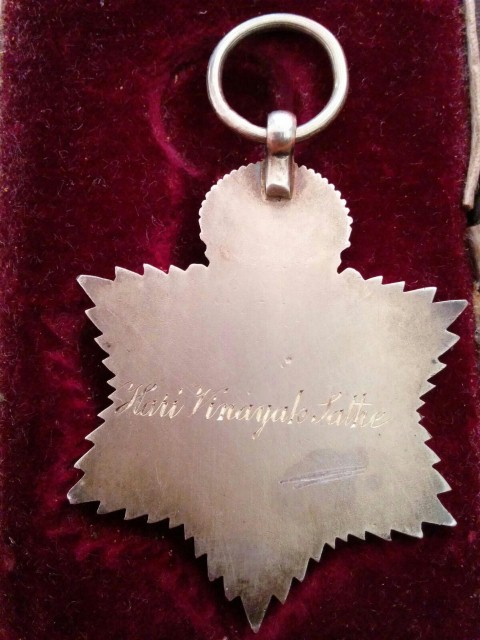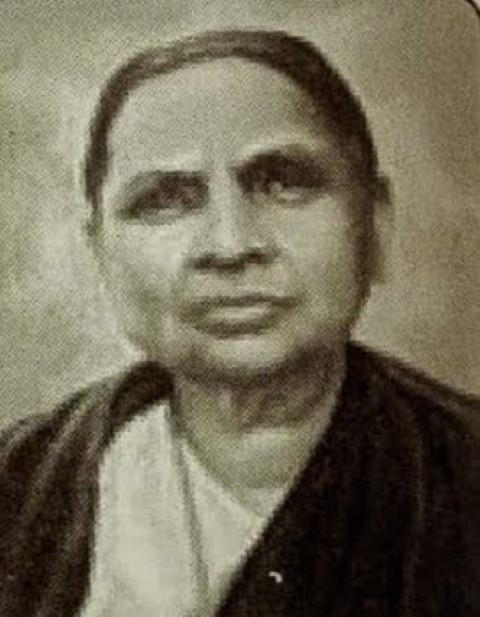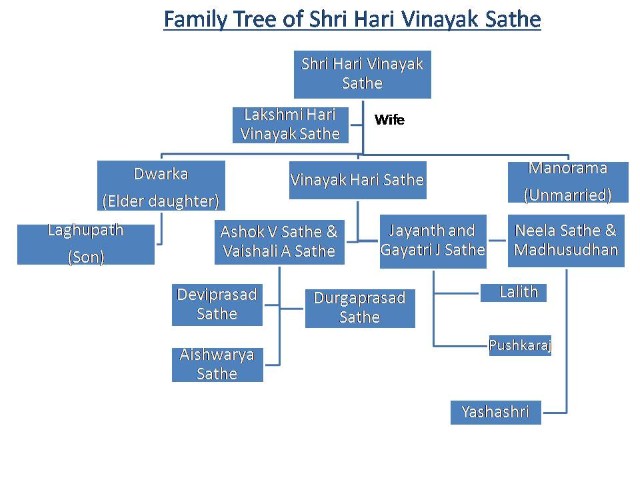|
Rao Bahadur Hari Vinayak Sathe was a Deputy Collector and a Settlement Officer in the Bombay Presidency. He was long remembered for his first great service to Baba’s faith by building the first chatram or chavadi so to speak at Shirdi. He put it up in the year 1905-06. Baba’s fame had already spread abroad considerably and people having to visit Baba could not get accommodation in the very few hovels and houses there, and had often to stay under trees. So, Sathe’s Wada served as a great comfort and help to people in their Shirdi pilgrimage to see Baba. His second great service was the beginning of congregational worship by Baba’s followers, as he had provided the first Poojari who conducted the congregational worship of all. That pujari’s name was Meghashyam known as Megha. The most noticeable feature about Sathe was that at the age of fifty he married again after the loss of his wife. He had lost his wife some four or five years earlier, and she had left him only daughters and no sons. Every Hindu feels that unless he has a son, his spiritual position is unsafe. Sathe was anxious therefore to have a son, but there was no guarantee that the second wife would get any sons and not more daughters. So, he declared to his importunate friends who asked him to marry that if any great saint should advice him, he would do so. In 1904, he was Deputy Collector at Ahmednagar. He went down to Kopergaon, where Mr. Bharva was the mamlatdar and Mr. Bharva told him that Sai Baba living at Shirdi within Kopergaon taluk was a very great saint. So, both of them went in 1904 to see Sai Baba at the Mosque. After seeing Baba, H. V. Sathe came out without putting him any question. But Mr. Bharva told Baba, “Saheb has no son”, and then Baba replied that if he married, God will give him a son. As he stood in front of the Mosque, these words were heard by H. V. Sathe. Then, the question was about the bride. There was also the question of confirmation of Baba’s view. Sathe was orthodox and considered it necessary to get an able astrologer. There was one who had arrived at Poona to read his horoscope and find out whether Baba’s statement was corroborated by a reading of the horoscope. When the astrologer looked into his Horoscope, he declared that Sathe was to have male progeny only after his fiftieth year, that is, after 1905. So, Sathe was confirmed in the idea of marriage. Ganesh Damodar Kelkar had a daughter for marriage and he wrote to Sathe, when he was at Ahmednagar, asking him whether there was any bridegroom to suit his daughter. Thinking this was a feeler Sathe sent the reply, ‘There is no bridegroom here, but if you are thinking of me, carefully consider all the pros and cons and let me have your views’. So, Ganesh Damodar Kelkar offered his girl and after the girl was taken to Baba at the instance of Sathe, Baba put kumkum on her forehead and said, send the girl to Ahmedabad.
Insight on H.V.Sathe by Dr.Vinny Chitluri - Video Courtesy: Shri.Nikhil Kripalani So, in 1906 H. V. Sathe married Dada Kelkar’s daughter. After the marriage, when he went to take blessings from Sai Baba, He consecrated the Shawl and Silver Box and returned them with His blessings. But the first two children born to H.V.Sathe couple were girls. Hence, when Dada Kelkar went to Baba saying, “When are we to have a grandson”. Baba’s reply was, “I am requesting Allah. He will comply with my request.” So, in 1912 a grandson was born, hale and healthy and now represents the family at Poona. This marriage and providing a son was considered the principle service of Baba to Sathe.
Vinayak Hari Sathe - Hari Vinayak Sathe's Son About Sathe’s own service to Baba, he wanted to put up a house or Wada at Shirdi where his father-in-law Dada Kelkar should live and where other pilgrims could lodge when they visited Shirdi. When he was thinking so, Baba told him, “Pull down the village wall and build”. Sathe thought that he was asked to erect a wall around the whole village, and that would involve an immense cost at which he was frightened. But soon he found that Baba’s proposal was that a small site near the crumbling remnants of the village wall should be taken up by him, and that he should put up a building including the village wall. And this was done. Baba also pointed out that his building would include the gode neem tree, where Baba’s Guru’s tomb is situated. So, Sathe bought the land and used the remnants of the village wall to put up a Wada enclosing and surrounding the margosa tree. Baba told him that close to the tree was his Guru’s tomb, and so in putting up a wall for Wada, a niche was to be provided over that Guru’s tomb and in the niche Baba’s Guru was to be worshipped. Baba gave the name of his Guru, and Sathe thought it ended with a Shah or Sa. But elsewhere the information is given that Baba said that his Guru was Kabir. Some people think that this may be Kabir’s tomb. Kabir of course did not live and die at Shirdi but only at Benaras. But it is well known that his Hindu and Mohammedan followers had a dispute as to the disposal of his remains, and when they lifted up the cloth covering it, they discovered that it had turned into leaves and flowers. These leaves and flowers were taken to a number of places where tombs were erected over them, and it is believed by some that under the said margosa tree some of the leaves representing Kabir’s body might have been buried. Sathe himself went and resided at Shirdi for some time. Baba’s Aarti and puja had begun about the beginning of century, with the Aarti song modeled on the lines of the Pandharpur puja and approved by Nana Saheb Chandorkar. When Bapugir Ramgir Gosavi took some udhi to Jamner for Minatai’s delivery he took the Aarti song for Chandorkar’s approval around 1900 or 1904. There was no special celebration of Guru Poornima, and each person worshipped separately with that Aarti song. There was no congregational worship. Shawl consecrated by Sai Baba Silver Box consecrated by Baba As for Guru Poornima Baba told Dada Kelkar on a Guru Poornima day, don’t you know that this is a Guru Poornima Day? Come with your worship materials and do your Guru Pooja. So, from that day, every year Gurupooja is being conducted by all devotees at Shirdi. And still, at other times, it was individual puja alone. It developed into congregational puja when H. V. Sathe sent a Brahmin named Megha to Shirdi. Megha was a very peculiar orthodox Brahmin. He did not even know his Gayathri. But he did not wish to go near Muslim or have anything to do with the worship of Muslims. Sathe found him living at Viramgaon when he was the Deputy Collector there. He found Megha always repeating Namas-Sivaya. So, finding that he was sufficiently pious, Sathe taught him Sandhya and Gayathri and sent him to Broach to worship Siva there. After he did Siva worship at Broach, Sathe sent him to Shirdi telling him that Siva was in flesh and blood at Shirdi in the form of Sai Baba and gave him the necessary money. But at the Broach railway station, Megha learnt that Sai Baba was a Muslim and he was horrified. What? Have I to go and bow to a Muslim and pray? He thought. He requested Sathe not to send him to Shirdi. But Sathe insisted and gave him a letter to Dada Kelkar who, he said, would introduce him to Baba and make him understand Baba. But when Megha went to the Shirdi Mosque, Baba got angry and would not allow him to get into the Mosque. Baba said, “Kick out that rascal” and asked, “What a fool is this Saheb to send this man here?” Megha then went away to Triambak and worshipped Gangadareswarar for a year and half. He suffered there from severe pains in his abdomen. During that time he got faith in Baba and came back to Shirdi. Dada Kelkar interceded on his behalf and Baba allowed him to stay at Shirdi and worship him at the Mosque. Nose Ring of Lakshmi Hari Vinayak Sathe Baba’s work on Megha was purely internal. Baba did not give any oral instruction at all. But by that internal change. Megha became the most remarkable bhakta of Sai Baba, whom he considered really as Siva. Megha, being a hardy man, would go to Godavari daily, which is locally called Ganga (5 miles away from Shirdi en route to Kopergaon station), bring Ganga water and pour it on the head of Siva, Siva being Sai Baba. Sri R. B. Purandhare, an Ankita of Baba, mentions here one chamatkar of Baba. In his anxiety to pour Ganga water on Baba, Megha had brought a whole pot. Baba told him put a few drops on the head and that will suffice as head is the important organ of the body. But the impetuousness of Megha’s bhakti made him take up the whole pot and turn it upside down over the head of Baba. Strangely, not a drop of water fell on the body of Baba. The whole pot of water had fallen on the head without touching Baba’s body. So, just as Siva had tied up Ganga in his own tuft, Baba also used his head for retaining and throwing away the water so as not to touch his body or cloths. Megha was treated by Baba very kindly and Baba suited himself to Megha’s taste. As he specialized in Siva worship, Baba gave him a Pindi or lingam as we call it, that is, an elongated round stone which is worshipped as Siva, when placed in the hollow of another stone, which is called yoni. Somebody had brought a pindi to Baba, and Baba presented it to Megha and asked him to go on with its worship. This was installed in Sathe wada, and Megha worshipped the Siva linga there. Just immediately before this pindi came, Baba appeared in Megha’s sleep and told him, “Draw up a Trisul” that is, Siva’s Trident. Megha wondered how Baba’s voice could be heard inside the wada. So, he went to the Mosque and asked Baba whether he gave the order. Baba said he did, and when asked how he could get entrance into the wada when door was bolted. Baba declared, “Bolted doors do not bar access to me”. Megha was also given a huge picture of Baba by H. S. Dixit to be placed by the side of his pindi so that he could worship the Siva linga together with Sai Baba’s picture. Baba noting his peculiar idiosyncrasy to worship all the gods in the temples of the village, that is, Devi, Sani, Siva, Maruti and Khandoba, told him, “After worshipping all these, come and worship Me”. Megha did so regularly. Megha was impressed with Baba’s omnipresence, by his directions on some occasions. One day when he went to Khandoba’s, Upasani Maharaj, who lived there, had bolted the door from within, and he could not enter into the temple and worship Khandoba. So he returned to Baba. Khandoba’s temple is very long way off from Baba’s Mosque and is not visible from there. When Megha went to worship Baba on that day, Baba told him, “You have not yet done worship at Khandoba’s. If you go there now you will find the door open. Do the puja of Khandoba and then come here. Megha then went to Khandoba and saw the door open as stated by Baba. After doing that puja, he went to Sai Baba for puja. Front View of the Silver Medal given by Queen Elizabeth to H V Sathe
Back View of the Silver Medal given by Queen Elizabeth to H V Sathe Megha died in 1912 at Shirdi. Baba’s appreciation was shown by his coming to the corpse and placing his hands over it saying, “This was a true devotee of mine”. Baba bore the expenses of the funeral dinner and Kaka Saheb Dixit carried out his order. About Sathe’s other benefits from contact with Sai Baba, we may first mention that by Baba’s direction and guidance, he had success in some of his official efforts. He had applied for pension, and the pension granted in the first instance was less by Rs. 50 than what it ought to have been. Then Sathe sent up petition to the Government protesting against the reduction. Baba asked Dhumal, who came to him for Rs. 50 dakshina. Dhumal pleaded that he did not have the money. Then Baba told him “Go to Saheb and ask for it.” Dhumal went and asked, and Sathe was very glad at the demand for that was an indication to him that his petition then pending with government was successful. He gave the dakshina, and as he learnt subsequently it was on that very day the order on his petition was passed, for the grant of the extra Rs.50 pension. As for Sathe’s religious position, there was nothing special in his attainment or attention to religious or spiritual matters, and he did not go to Baba for religious development. But Baba of his own kindness wanted to correct his errors and train him alright. For instance, on one occasion when he was at Shirdi, his thoughts got loose and he went to visit the house of a lady who had a very doubtful reputation. Before going there, he paid his respects to Baba. Baba asked him, “Have you been to Sala?” (Meaning that lady’s residence) Then Sathe answered, “You have made me Deputy Collector. Would I have become that unless I went to school?” Baba, finding that he mistook his meaning, kept quiet. Later in the day, he visited that lady. There behind a close door or partly closed door, he was carrying on a conversation which would soon have hurled him into spiritual ruin. But suddenly the door was flung open, and at the threshold stood Baba, who waved his arms and made gestures to Sathe telling him, “What? You have come all the way to your Guru and you are descending to hell.” Well, at once, like a thief caught in the act, Sathe repented. Baba disappeared and Sathe left that Sala and never visited her again. Thus, his purity was saved by Baba. On another occasion, he had similar help. He had purchased a land near about Shirdi and wanted to go and see it. He had ordered a cart, and his wife promised to go with him to see the land. But unfortunately his agnatic cousin, Babu, had lived there and died recently. Dada Kelkar thinking that if Baba’s widow should come to know about the purchase of the land, there might be claims and trouble and so told his daughter who was Sathe’s wife not to go and see the land. So, the lady when asked to get into the cart declined. Sathe was full of wrath. He pulled out the stick from the cart man, and was going to belabour his wife when lo! Megha came rushing in and told him, “Baba wants you”. Down came the stick and he went to Baba. Baba told him, “What has happened? Your land is there. Why should you go and see it? He found that Baba was keeping a watch over him, whether he was in the act of cruelty to his wife or in danger of immoral relations with some woman. But Baba did not carry his spiritual instruction in the case of Sathe very far, because though he was fairly orthodox and moral, was hardly competent to take any serious steps in the purely spiritual line. He was very worldly-minded and what he was thinking of most was his position with the Government and later his financial position.
Hari Vinayak Sathe's Wife Lakshmi Bai Hari Vinayak Sathe From the very beginning, Sathe’s appreciation of Baba was somewhat defective. When Baba said that he was going to have a son if married, he wanted confirmation from a famous astrologer about the correctness of Baba’s prediction. Then again on other matters also, he was not sufficiently attentive to Baba’s wishes. On one occasion, for instance, he held a feast for which he invited everybody except his father-in-law with whom he had differences. When he went to invite Baba, Baba wished to rebuke him for harbouring such feelings of hatred. Baba said when he came in ‘Fetch a stick’, Sathe stood quiet. Baba did not actually mean to club him and changed his mood and said, “Never mind, I will come”. But, of course, Baba did not go. Sathe did not change his feelings towards his father-in-law for a considerable time. One another occasion, Sathe went to intercede in a marwadi’s affairs. Factious spirit was rife at Shirdi. Baba did not like that this high officer of the Government should interfere in such matters. Baba expressed his displeasure at that also. Baba pulled down Sathe’s ideas of vanity and pomp on one occasion. When the wada was being built, the laying of the foundation stone was the first question. But Sathe who went there accidentally wanted formally to lay the foundation stone himself. Baba told him, “This is the time for the foundation stone to be laid”. Then Sathe took up a hatchet and proceeded to lay the foundation stone. Baba stopped him and asked, “Why do you go there? What have you to do with all this? The masons and workmen will do it?” Baba’s help to Sathe was mainly on the worldly plane, though Baba gave him repeated inklings of his antarjnana. But unfortunately Sathe had not even a fraction of the faith which Chandorkar, Dixit, and others had. On one occasion the Collector and several Settlement Officers were to meet him at some railway station. So, Sathe wanted to go from Shirdi. But Baba told him not to start. But still he wanted to go, his official ideas of punctuality standing in the way of appreciating and obeying Baba. He could not understand the reason for Baba’s stopping him. Then Baba told Kelkar, “Lock him up for three days and then let him go.” For three days he could not quit Shirdi and then when he went, he discovered that Baba somehow knew that the Settlement Officers and others had cancelled their programme and there was no meeting at all that day. In religious matters more than in others, faith is wanted, and Sathe thought he should go to others for upadesa. For instance when others were going to Sakori to Upasani Baba for upadesa, he also considered why he should not go there to get upadesa. There was also a lady called Attabai of Sangola. There was Ganapat Upasaka. There was the yogi of Moregaon named Vinayak Patak Maharaj. These offered to give upadesa to Sathe. Sathe consulted Baba about Upasani Maharaj in person through Dada Kelkar in the latter two cases. Baba dissuaded him. Baba wanted him to concentrate, Ananyachinta, and have firm, exclusive faith in Himself, as he could look after every interest of his, temporal and spiritual. Unfortunately, Sathe could not rise to the full height of Ananyachinta. Like Upasani Maharaj, Sathe also got mixed up with local clashes. There were a number of people at Shirdi who were dead against him as they were against Upasani Maharaj, the chief of them being Nana Wali, a religious ascetic, who was a bully and a terror to most people there. The reason for Sathe’s unpopularity was mostly in connection with his starting a Dakshina Bhiksha Sansthan. In December 1915, he had a call from Baba, and at Baba’s bidding, he formed a society of which he himself was the president. It ran a journal called Sainath Prabha. The object of the society was to collect or recover a part of the money distributed by Baba daily and with it run the Shirdi Sai Sansthan. But this attempt to control receipts from Baba made Sathe unpopular. Nana Wali thought that he would be doing a good service to Baba and to the village by getting rid of this unpopular man Sathe. Some of the leading villagers on account of their bitterness against him held him responsible for the loss to the Sansthan by theft of some articles like silver horses from the palanquin and troubled him in other similar trivial matters. In January 1918, even lawyer’s notices were served on him. Baba advised him to be patient and give a suitable reply. Baba said that he would protect him and that no proceedings would be taken against him. Really no proceedings were taken against him. However, the villagers still continued to regard this reserved and high placed Sathe with dislike and on one occasion Nana Wali took up a huge axe and stood at the entrance to the Mosque probably with a view to attack Sathe when he entered the Mosque. Dada Kelkar sent word to Sathe that this bully was standing with a big axe ready to hew him down if he should go to the Mosque. H. V. Sathe beat a hasty retreat from Shirdi and never visited it again. Baba’s kind interest in Sathe’s family affair included his financial dealings. When Sathe retired, his financial circumstances decline, and he had to sell a jewel of his wife. Baba told Dada Kelkar then “Why does the fool of a Saheb sell my daughter’s jewel?” Regarding Babu, that is, the nephew of Dada Kelkar, Baba treated him as his pet. Baba would not attend to his official duties as the work of Assistance. Babu was a measurer under Sathe’s Assistant Limaye. Limaye could not check him and when Baba was told of Babu’s services, he said, “Blast the Government service. Let him serve me.” So, Babu constantly attended on Baba and would get to eat the choicest delicacies which were always available with Baba. In 1910, however, Babu’s death was approaching. He had been eating mangoes too freely and died in 1910. Some time later, Baba said in the presence of Mrs. Pradhan, “This lady is going to be my Babu’s mother.” In a year after that, she became pregnant and the child then born was named Babu Pradhan. H. V. Sathe was once asked how he continued to believe in Baba, even though Baba could not save him from the mischief of Nana Wali. Sathe replied, “Just as the Minister of the Peshwa was murdered right in front of Vittal at Pandharpur. That did not however prevent people from believing in Vittal even though Vittal did not save him, similarly his own faith in Sai Baba was unaffected by Nana Wali’s threats. There was a book written in English, namely, Sai Katha Karandaka, in which 10 or 12 stories about Baba were written by H. V. Sathe and printed and published. These are mistaken by some to be historical and to be real facts. But Sathe mentions in his statement in 1936 that these were fictions. Baba had given one fact in the course of his talk, and the entire story was built upon the basis of that single fact narrated by Baba. This Sai Karandaka was never shown to Baba and never got his approval. Similarly about the journal Sai Prabha that he ran, he left it entirely to Mr. Narayana Sundar Rao, who was the editor and the soul of it. The Nom-de-plume Ramgir in that journal represents only Narayana Sundar Rao. Family Tree of Late Shri.Hari Vinayak Sathe
We are giving below the contact details of Smt.Aishwarya Sathe, Great Grand Daughter of Late Shri.Hari Vinayak Sathe for the benefit of Sai Devotees: Smt.Aishwarya B.Sathe (Source: Life of Sai Baba Volume III by Parama Poojay Late Shri.B.V.Narasimha Swamiji. Personal Interview Smt.Shreya Nagaraj had with Smt.Aishwarya Sathe, Great Grand Daughter of Late Shri.Hari Vinayak Sathe on 17th October 2015. Video Courtesy: Shri.Nikhil Kripalani, Saibaba Devotee Speaks, Photograph and Family Tree Courtesy: Shri. Nagaraj Sham, Pune & Jignesh C.Rajput, Surat) |

